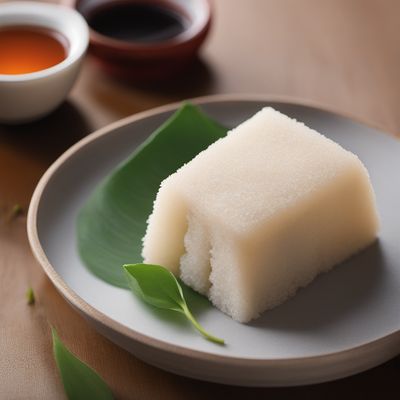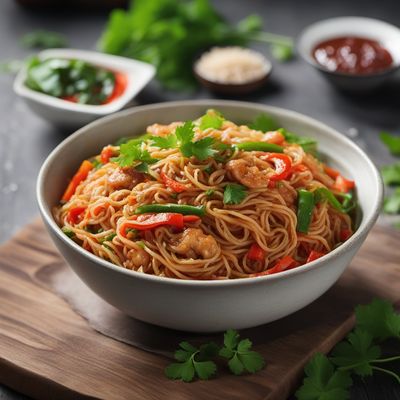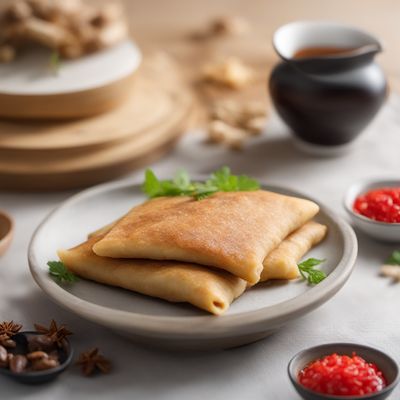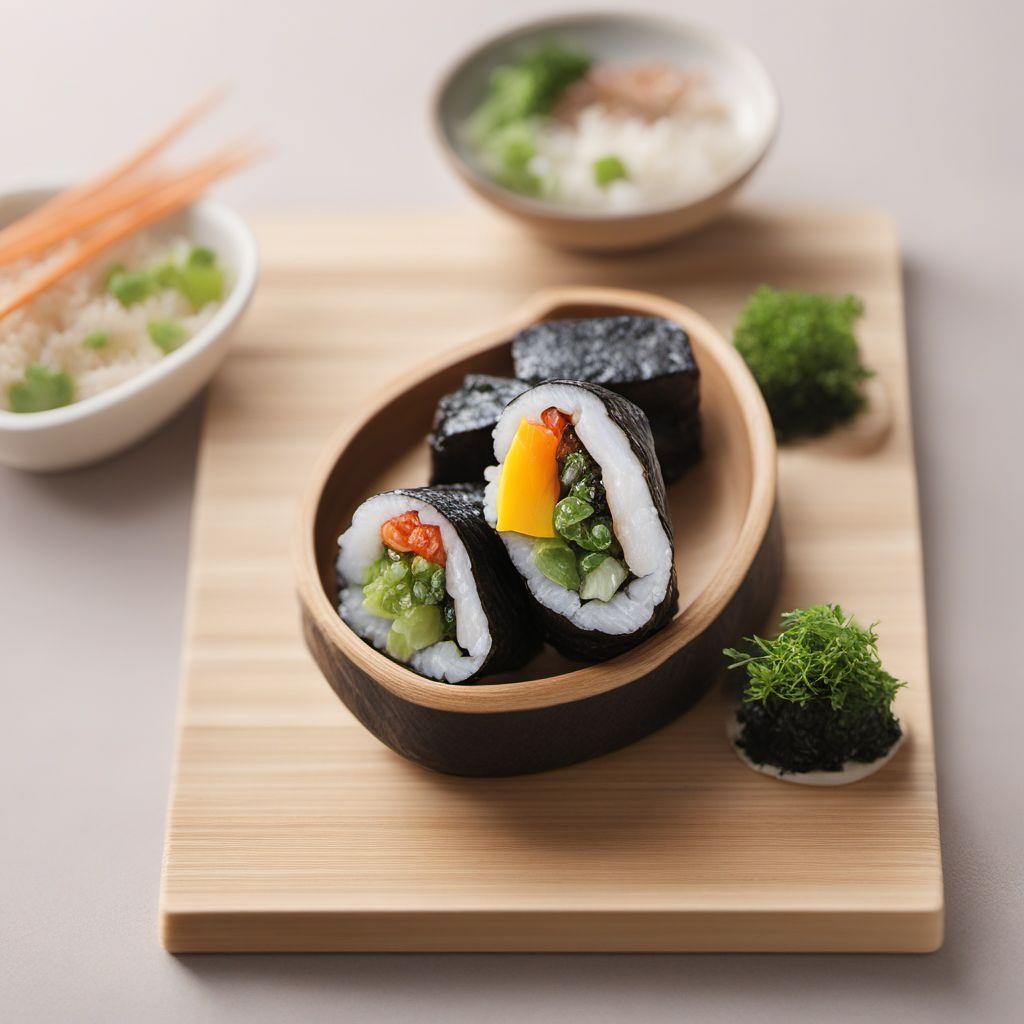
Recipe
Liaoning-style Egg Nigiri Sushi
Savory Liaoning Egg Nigiri Sushi Delight
4.5 out of 5
Indulge in the flavors of Liaoning cuisine with this delightful twist on the classic Tamago nigiri sushi. Liaoning-style Egg Nigiri Sushi combines the delicate sweetness of Japanese Tamago with the bold and savory flavors of Liaoning cuisine, resulting in a unique and satisfying culinary experience.
Metadata
Preparation time
20 minutes
Cooking time
10 minutes
Total time
30 minutes
Yields
4 servings
Preparation difficulty
Easy
Suitable for
Pescatarian, Dairy-free, Nut-free, Gluten-free, Low-fat
Allergens
Eggs, Soy
Not suitable for
Vegan, Vegetarian, Paleo, Keto, High-fat
Ingredients
In this Liaoning-style adaptation, the traditional Japanese Tamago nigiri sushi is infused with the flavors of Liaoning cuisine. The original sweet and fluffy Tamago is enhanced with the addition of Liaoning-specific ingredients and spices, resulting in a more savory and robust flavor profile. The use of local ingredients adds a unique twist to the dish, making it a delightful fusion of Japanese and Liaoning culinary traditions. We alse have the original recipe for Tamago nigiri sushi, so you can check it out.
-
4 large eggs 4 large eggs
-
2 tablespoons soy sauce (30ml) 2 tablespoons soy sauce (30ml)
-
1 tablespoon oyster sauce (15ml) 1 tablespoon oyster sauce (15ml)
-
1 tablespoon sesame oil (15ml) 1 tablespoon sesame oil (15ml)
-
1 tablespoon Shaoxing wine (15ml) 1 tablespoon Shaoxing wine (15ml)
-
1 tablespoon sugar (15g) 1 tablespoon sugar (15g)
-
1/2 teaspoon salt (2.5g) 1/2 teaspoon salt (2.5g)
-
1 cup sushi rice (200g) 1 cup sushi rice (200g)
-
4 sheets of nori seaweed 4 sheets of nori seaweed
Nutrition
- Calories (kcal / KJ): 180 kcal / 753 KJ
- Fat (total, saturated): 6g, 1.5g
- Carbohydrates (total, sugars): 24g, 2g
- Protein: 6g
- Fiber: 1g
- Salt: 1.5g
Preparation
-
1.In a bowl, whisk together the eggs, soy sauce, oyster sauce, sesame oil, Shaoxing wine, sugar, and salt.
-
2.Heat a non-stick pan over medium heat and add the egg mixture. Cook the eggs, gently folding them over themselves until they are cooked through but still soft and slightly runny.
-
3.Remove the cooked eggs from the pan and let them cool.
-
4.Prepare the sushi rice according to the package instructions.
-
5.Wet your hands with water and shape the sushi rice into small rectangular pieces.
-
6.Cut the cooked eggs into rectangular slices that fit the size of the sushi rice.
-
7.Place a slice of cooked egg on top of each sushi rice piece.
-
8.Wrap each sushi rice and egg piece with a strip of nori seaweed.
Treat your ingredients with care...
- Eggs — Whisk the eggs thoroughly to ensure a fluffy texture in the Tamago.
- Soy sauce — Use a high-quality soy sauce for the best flavor.
- Oyster sauce — Look for oyster sauce without any added MSG for a healthier option.
- Sesame oil — Toasted sesame oil adds a rich and nutty flavor to the dish.
- Shaoxing wine — If Shaoxing wine is not available, you can substitute it with dry sherry.
Tips & Tricks
- To achieve a fluffy texture in the Tamago, gently fold the eggs while cooking instead of stirring vigorously.
- Let the cooked eggs cool before slicing to ensure clean and neat cuts.
- Wetting your hands with water while shaping the sushi rice will prevent it from sticking to your hands.
- Use a sharp knife to cut the sushi rolls for clean and precise slices.
- Serve the Liaoning-style Egg Nigiri Sushi with a drizzle of soy sauce and a sprinkle of sesame seeds for added flavor.
Serving advice
Serve the Liaoning-style Egg Nigiri Sushi as an appetizer or part of a sushi platter. Arrange the sushi pieces on a beautiful plate or sushi board, garnished with fresh herbs or edible flowers for an elegant presentation.
Presentation advice
To enhance the presentation, you can use a sushi mat to shape the sushi rice into perfectly rectangular pieces. Additionally, you can create a decorative pattern on the sushi rolls by using a sharp knife to make diagonal cuts on the top layer of the nori seaweed.
More recipes...
More Japanese cuisine dishes » Browse all

Nanbanzuke
Fish in Vinegar Sauce
Nanbanzuke is a Japanese dish made from marinated fried fish.
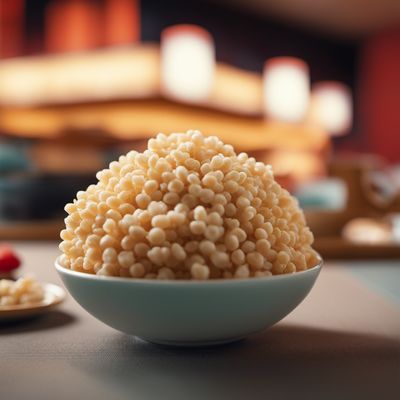
Okoshi
Okoshi is a traditional Japanese snack made from puffed rice and sugar. It has a crunchy texture and a sweet taste.

Tarako Spaghetti
Tarako Spaghetti is a Japanese pasta dish that is made with cod roe and spaghetti. It is a unique and flavorful dish that is perfect for seafood lovers.





